Energy, Land Use and Emissions
- Integrated assessment models (IAMs) are complex models of the energy-land-economy-climate system that use socioeconomic assumptions to produce energy, land use and emissions scenarios.
- IAMs show that the widely varying socioeconomic futures described by the SSPs lead to large variations in energy, land use and emissions in baseline projections without climate policy interventions.
- IAMs are used to derive both baseline projections (What can happen?) as well as pathways oriented to achieving mitigation goals (What should happen?)
Chapter Summary
Socioeconomic scenarios provide general narratives and key socioeconmic developments to characterize possible futures. To understand what this means for future greenhouse gas emissions and climate change, those assumptions need to be translated into quantitative projections for future energy and land use. This is done by integrated assessment models (IAMs) representing the world’s coupled energy-land-economy-climate system and its development over the 21st century. Based on socioeconomic scenarios, IAMs derive consistent pathways for macroeconomic, energy system, and land use variables and project resulting emissions of greenhouse gases and air pollutants until the end of the century. They calculate these energy-land-emissions pathways for both baseline projections (What can happen?) and mitigation goals (What should happen?).
Integrated assessment models (IAMs) provide consistent pathways for macroeconomic, energy system related, and land use variables and connect them to the resulting emissions.
IAMs in Detail
Here we give a very simple example of such an IAM. We assume that GDP is driven by labor, energy, and capital stock. As you can see all of those three factors are raising and so is GDP. For didactical reasons, we neglect land as a production factor in our simple example, but in reality as well as in detailed IAMs, it is an important factor.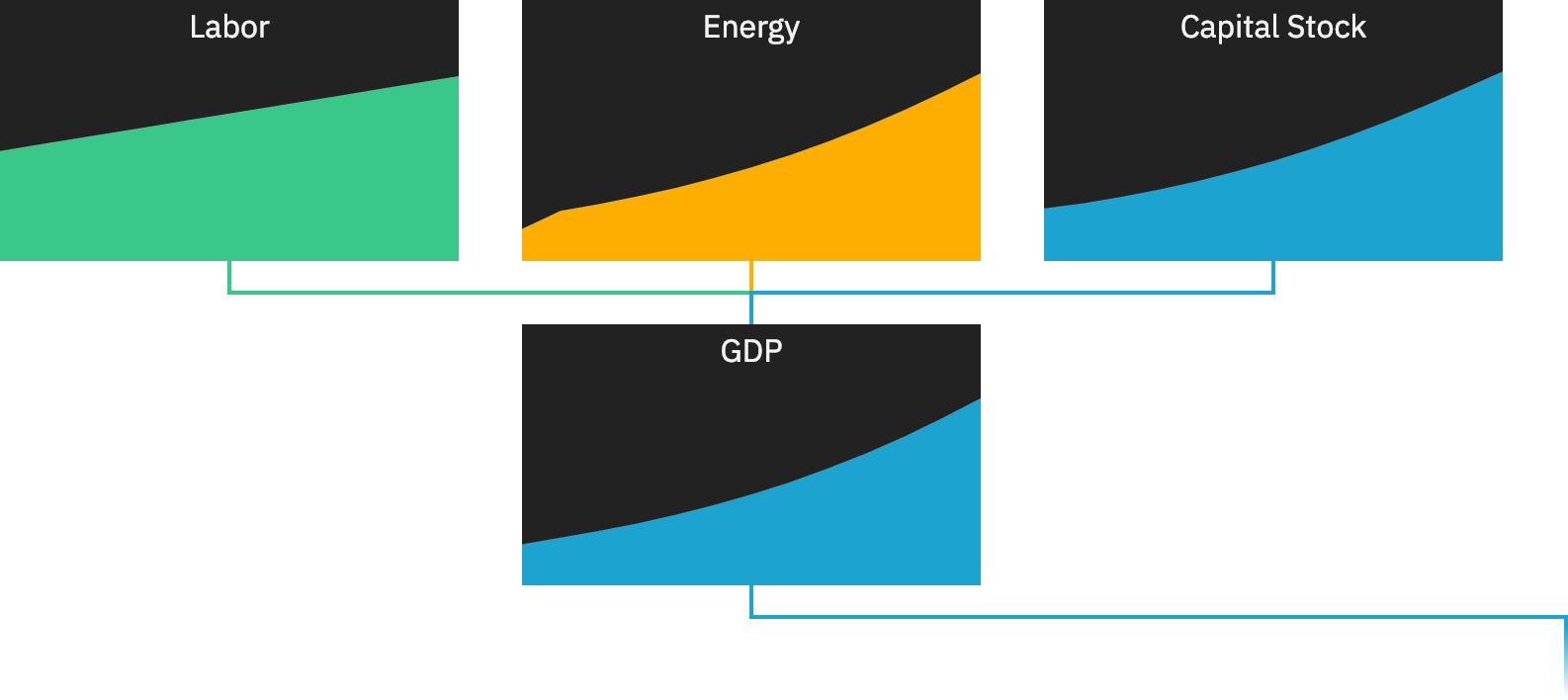
The produced GDP can be spent either for consumption, invested into the macro-economic capital stock or used to raise the amount of used energy. Other IAMs might also take into account investment into education which would increase the productivity of the labor. But for simplicity we ignore this option here in our very simple IAM. The goal of our simple IAM is to maximise consumption in the long run.

To analyse the effect on emissions in our simple IAM we split the total energy into clean energy and dirty energy and also give the opportunity to invest into both types of energy separately. In this simple case only dirty energy leads to emissions. That means that the decision how much of the GDP is used to build up capacities of clean energy instead of dirty energy determines the resulting amount of emissions. The model does not include the impact of emissions on climate change which in turn would impact economic growth and energy and land use.
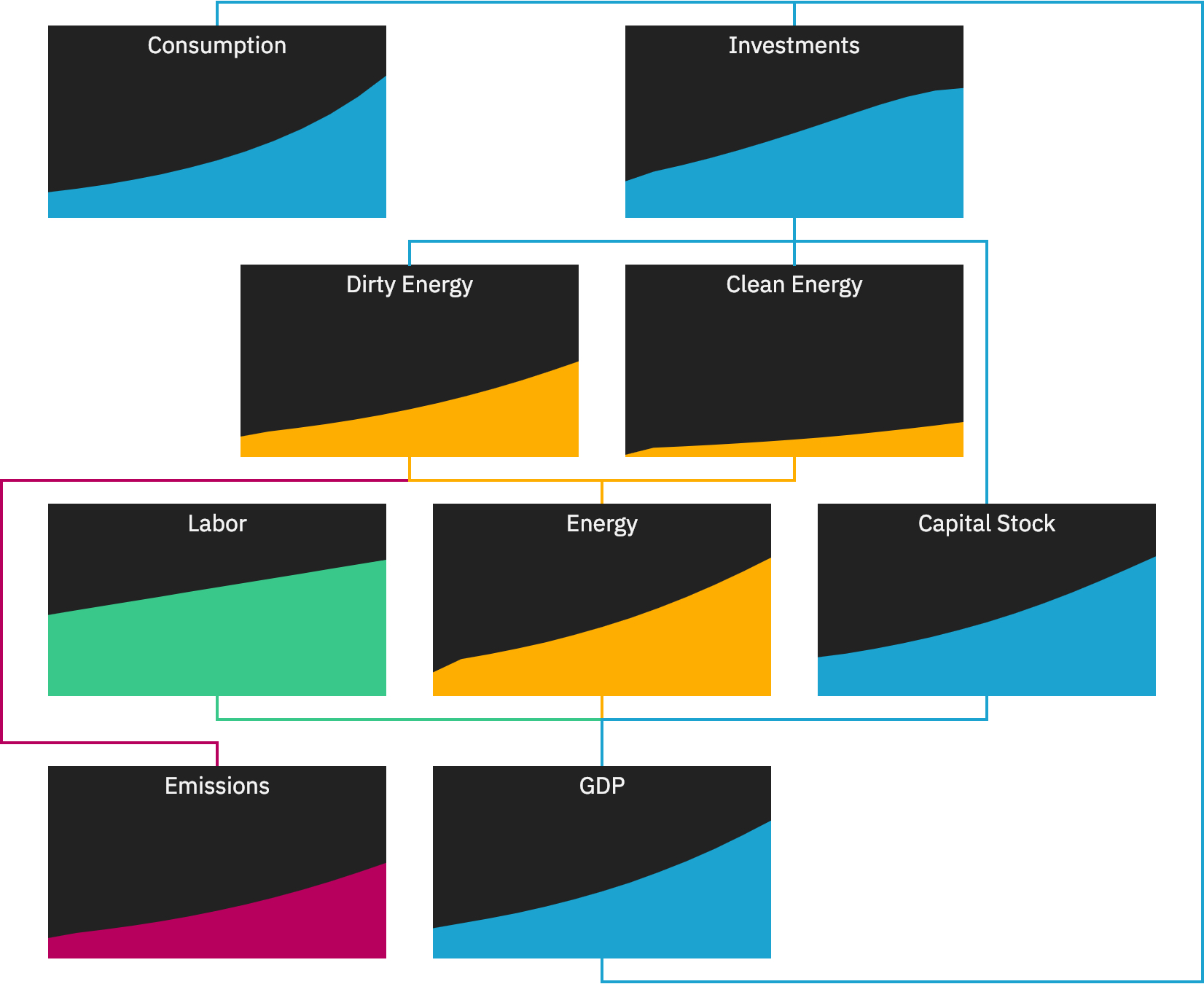
Using this model we demonstrate the impact of assumptions like the growth of labor input, which can be driven by more people entering the work force as well as increasing labor productivity, and introduction of a carbon tax. Explore how different socio-economic and climate change mitigation scenarios play out.
The IAMs used to generate SSP scenarios are a lot more complex. Clean and dirty energy is differentiated into energy sources and emissions into different types:
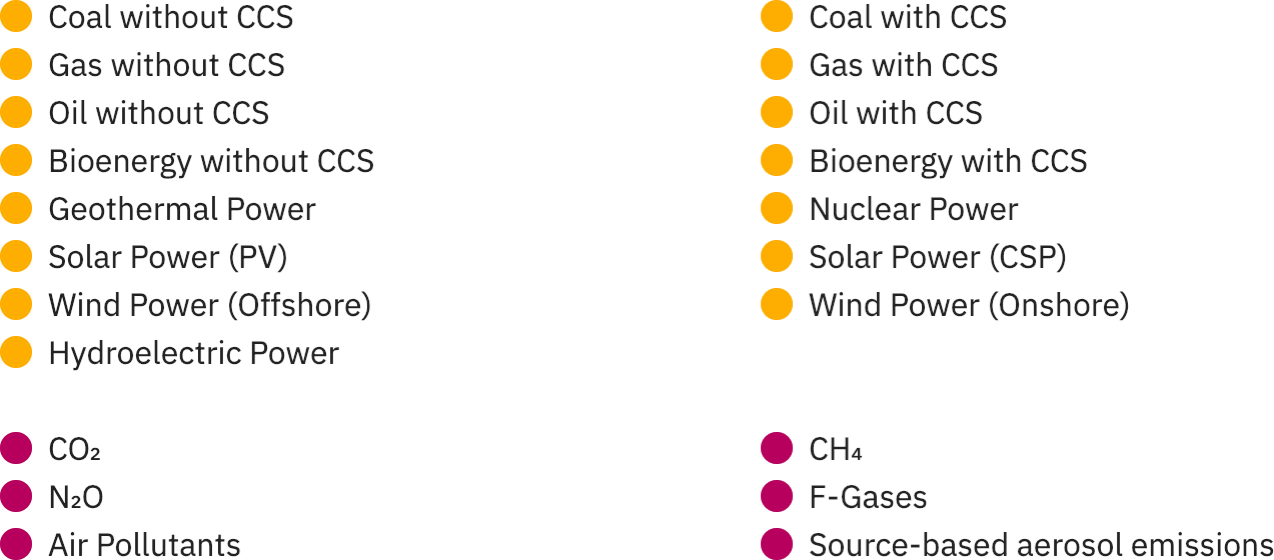
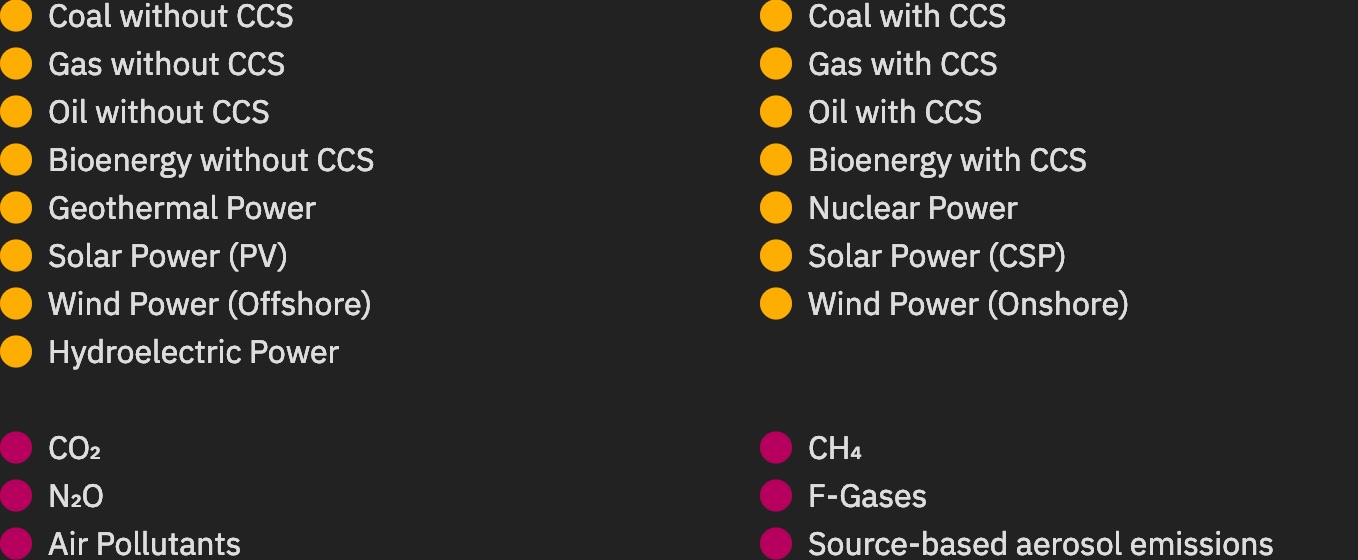
Overall the more complex IAMs represent energy use on a process level, i.e. they take into account a large number of energy technologies to produce electricity, solids, liquids and gases from different energy sources like fossil fuels, nuclear and renewable energy, and link the energy supply modelling to detailed projections of energy demand. Likewise they include detailed land use models describing different uses of land and the competition between them, dependending on environmental, demand and management factors. They convert the various uses of energy and land into emissions projections for a variety of greenhouse gases and air pollutants.
But there are also key differences between IAMs. Some are more detailed in specific aspects and cover different categories better then others. As this makes some better suited to handle the input assumptions of individual SSPs, each of the SSPs has its own reference model.
So feeding socioeconomic scenario assumptions into IAMs will get us scenarios for energy use, land use and emissions. Let’s see how this plays out for the socioeconomic futures described by the SSPs. Population and GDP developments in the SSPs are shown below.
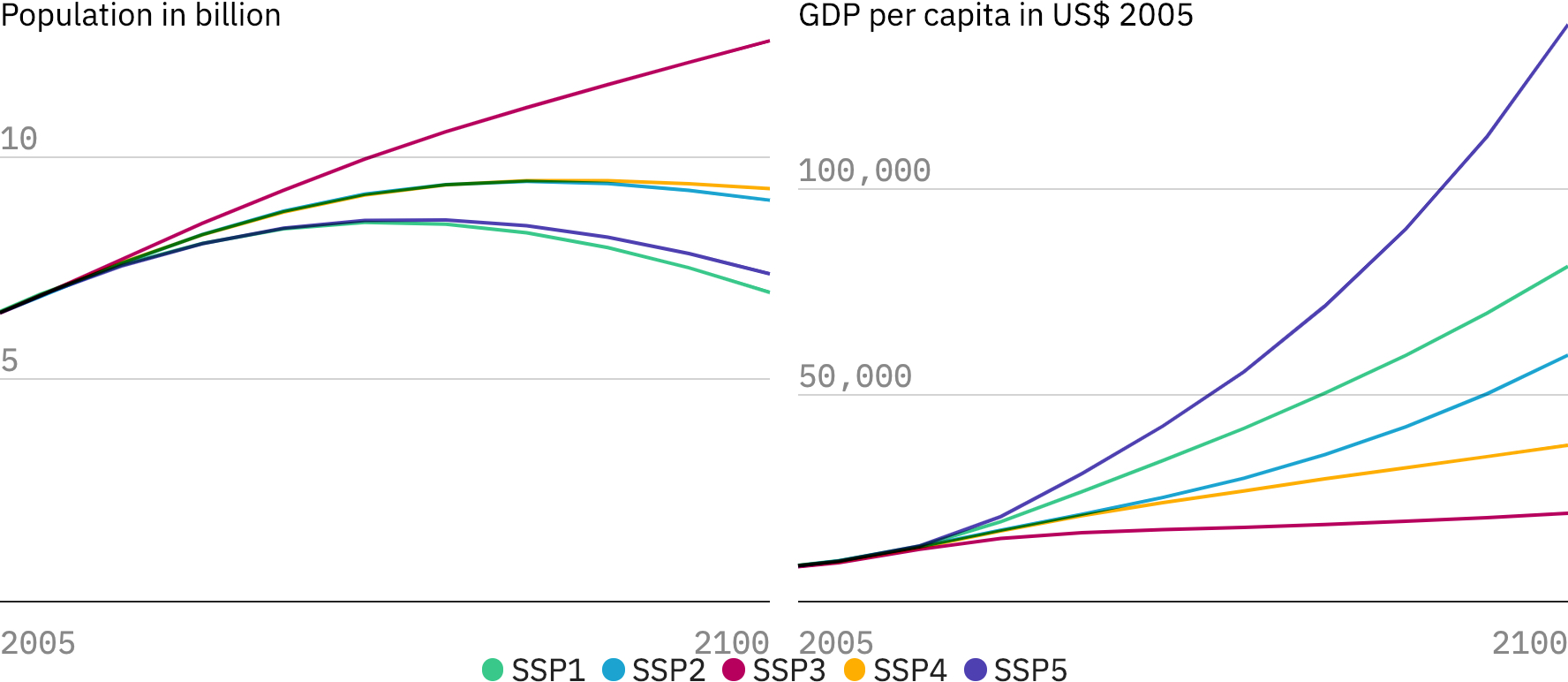
As you can see the
SSP 3
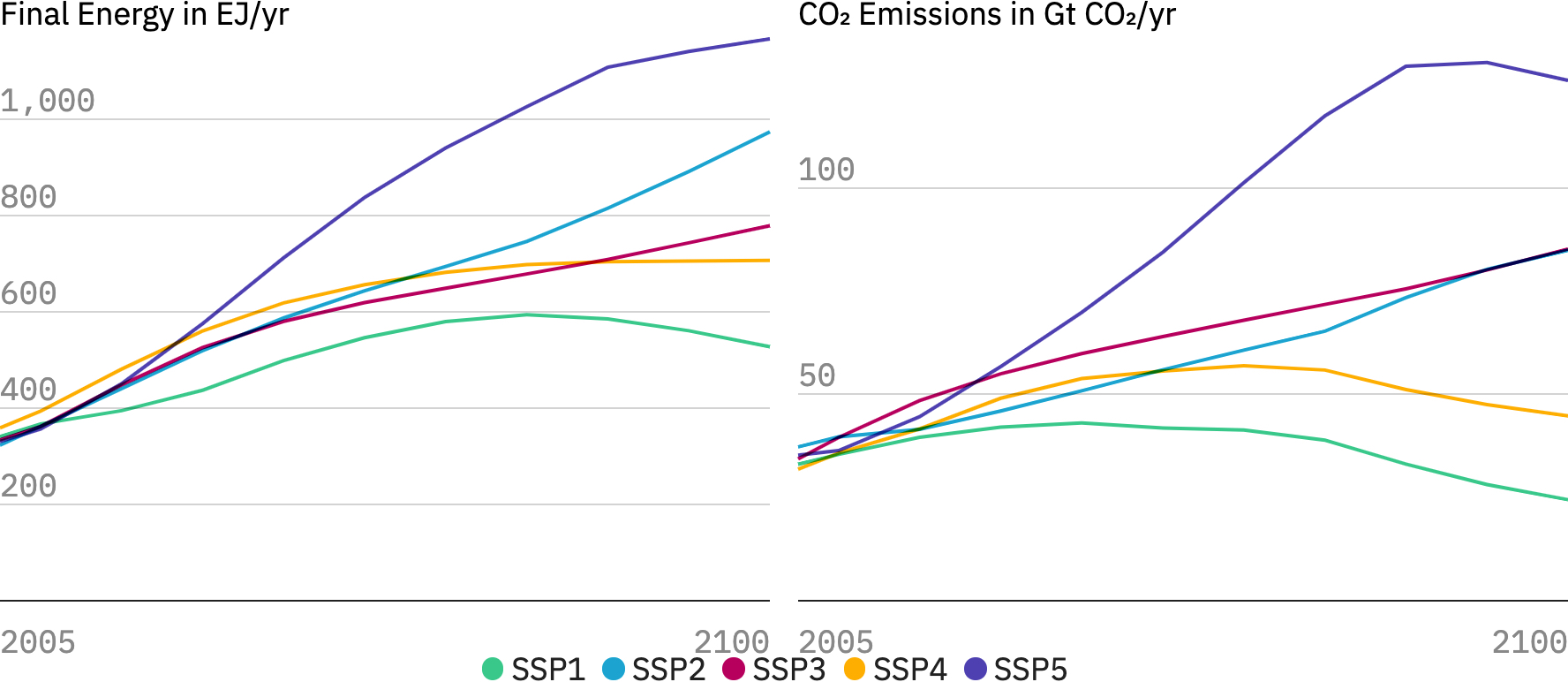
This and other factors such as technological progress and lifestyles affect future energy and land use. Here we show the examples of energy demand and CO2 emissions. The resource intensity of
SSP 5